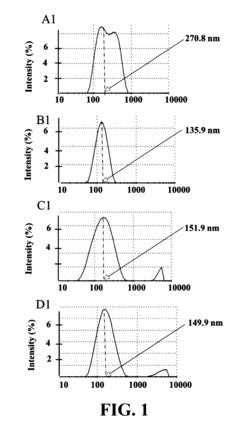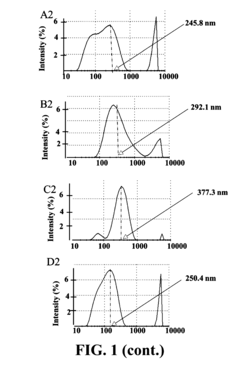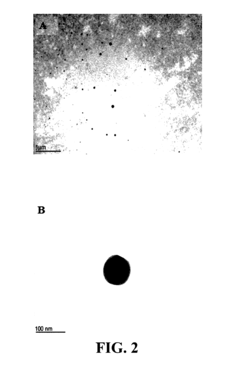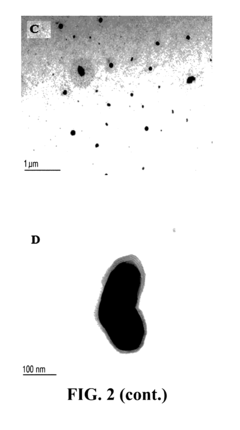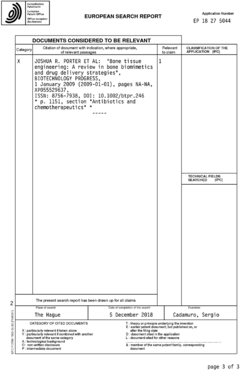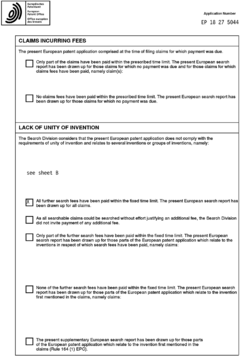Sodium Acetate: From Laboratory Study to Commercial Application
JUN 30, 20259 MIN READ
Generate Your Research Report Instantly with AI Agent
Patsnap Eureka helps you evaluate technical feasibility & market potential.
Sodium Acetate Overview and Research Objectives
Sodium acetate, a versatile compound with the chemical formula CH3COONa, has been a subject of scientific interest for decades. This salt of acetic acid and sodium has evolved from a laboratory curiosity to a widely used industrial chemical, finding applications across diverse sectors. The journey of sodium acetate from laboratory study to commercial application exemplifies the process of translating scientific discoveries into practical, real-world solutions.
The primary objective of this research is to comprehensively examine the trajectory of sodium acetate's development, from its initial synthesis and characterization to its current status as a commercially significant compound. This investigation aims to elucidate the key milestones in sodium acetate research, highlighting the pivotal discoveries and technological advancements that have shaped its industrial adoption.
A critical aspect of this study is to analyze the unique properties of sodium acetate that have made it valuable in various applications. These properties include its ability to form supersaturated solutions, its role as a weak base, and its capacity to act as a buffering agent. Understanding these characteristics is essential for appreciating the compound's versatility and its potential for future applications.
The research will also focus on the evolution of production methods for sodium acetate. From early laboratory-scale synthesis to modern industrial processes, this analysis will shed light on how manufacturing techniques have been refined to meet growing demand and stringent quality requirements. This includes exploring innovations in process efficiency, cost-effectiveness, and environmental sustainability in sodium acetate production.
Furthermore, this study aims to map out the current landscape of sodium acetate applications. From its use as a food additive and preservative to its role in textile manufacturing and as a de-icing agent, the research will provide a comprehensive overview of how sodium acetate has become integrated into various industries. This exploration will also consider emerging applications and potential future uses of the compound.
An important objective of this research is to identify the challenges and opportunities in the sodium acetate market. This includes analyzing market trends, regulatory landscapes, and competitive dynamics that influence the compound's commercial viability. By examining these factors, the study aims to provide insights into the future direction of sodium acetate research and development.
Lastly, this research seeks to draw lessons from the sodium acetate story that can be applied to other areas of chemical research and development. By understanding the factors that contributed to its successful transition from laboratory to industry, we can gain valuable insights into the process of commercializing scientific discoveries in the broader field of chemistry.
The primary objective of this research is to comprehensively examine the trajectory of sodium acetate's development, from its initial synthesis and characterization to its current status as a commercially significant compound. This investigation aims to elucidate the key milestones in sodium acetate research, highlighting the pivotal discoveries and technological advancements that have shaped its industrial adoption.
A critical aspect of this study is to analyze the unique properties of sodium acetate that have made it valuable in various applications. These properties include its ability to form supersaturated solutions, its role as a weak base, and its capacity to act as a buffering agent. Understanding these characteristics is essential for appreciating the compound's versatility and its potential for future applications.
The research will also focus on the evolution of production methods for sodium acetate. From early laboratory-scale synthesis to modern industrial processes, this analysis will shed light on how manufacturing techniques have been refined to meet growing demand and stringent quality requirements. This includes exploring innovations in process efficiency, cost-effectiveness, and environmental sustainability in sodium acetate production.
Furthermore, this study aims to map out the current landscape of sodium acetate applications. From its use as a food additive and preservative to its role in textile manufacturing and as a de-icing agent, the research will provide a comprehensive overview of how sodium acetate has become integrated into various industries. This exploration will also consider emerging applications and potential future uses of the compound.
An important objective of this research is to identify the challenges and opportunities in the sodium acetate market. This includes analyzing market trends, regulatory landscapes, and competitive dynamics that influence the compound's commercial viability. By examining these factors, the study aims to provide insights into the future direction of sodium acetate research and development.
Lastly, this research seeks to draw lessons from the sodium acetate story that can be applied to other areas of chemical research and development. By understanding the factors that contributed to its successful transition from laboratory to industry, we can gain valuable insights into the process of commercializing scientific discoveries in the broader field of chemistry.
Market Analysis for Sodium Acetate Applications
The global sodium acetate market has shown steady growth in recent years, driven by its versatile applications across various industries. The market size was valued at approximately $180 million in 2020 and is projected to reach $250 million by 2027, growing at a CAGR of around 5% during the forecast period. This growth is primarily attributed to the increasing demand for sodium acetate in textile, food preservation, and pharmaceutical industries.
In the textile industry, sodium acetate is widely used as a dyeing auxiliary and pH buffer. The growing textile sector, particularly in developing countries like China, India, and Bangladesh, is expected to fuel the demand for sodium acetate. The food industry represents another significant market for sodium acetate, where it is used as a preservative and flavoring agent. With the rising consumer preference for convenience foods and the expansion of the food processing industry, the demand for sodium acetate in this sector is anticipated to grow substantially.
The pharmaceutical industry is also a key consumer of sodium acetate, utilizing it in various formulations and as a buffering agent. The global pharmaceutical market's steady growth, coupled with increased research and development activities, is likely to boost the demand for sodium acetate in this sector. Additionally, the chemical industry uses sodium acetate in various processes, including as a catalyst and reagent, further contributing to market growth.
Geographically, Asia Pacific dominates the sodium acetate market, accounting for over 40% of the global share. This dominance is attributed to the region's robust industrial growth, particularly in China and India. North America and Europe follow, with significant market shares driven by their well-established pharmaceutical and food processing industries.
The market is characterized by the presence of several key players, including Niacet Corporation, CABB Group, Jost Chemical Co., and Merck KGaA. These companies are focusing on expanding their production capacities and developing innovative applications to gain a competitive edge. The market also witnesses a trend towards the development of high-purity grades of sodium acetate for specialized applications in pharmaceuticals and electronics.
Despite the positive outlook, the sodium acetate market faces challenges such as fluctuating raw material prices and environmental concerns related to its production process. However, ongoing research into sustainable production methods and the exploration of new applications in emerging industries like renewable energy storage present opportunities for future market expansion.
In the textile industry, sodium acetate is widely used as a dyeing auxiliary and pH buffer. The growing textile sector, particularly in developing countries like China, India, and Bangladesh, is expected to fuel the demand for sodium acetate. The food industry represents another significant market for sodium acetate, where it is used as a preservative and flavoring agent. With the rising consumer preference for convenience foods and the expansion of the food processing industry, the demand for sodium acetate in this sector is anticipated to grow substantially.
The pharmaceutical industry is also a key consumer of sodium acetate, utilizing it in various formulations and as a buffering agent. The global pharmaceutical market's steady growth, coupled with increased research and development activities, is likely to boost the demand for sodium acetate in this sector. Additionally, the chemical industry uses sodium acetate in various processes, including as a catalyst and reagent, further contributing to market growth.
Geographically, Asia Pacific dominates the sodium acetate market, accounting for over 40% of the global share. This dominance is attributed to the region's robust industrial growth, particularly in China and India. North America and Europe follow, with significant market shares driven by their well-established pharmaceutical and food processing industries.
The market is characterized by the presence of several key players, including Niacet Corporation, CABB Group, Jost Chemical Co., and Merck KGaA. These companies are focusing on expanding their production capacities and developing innovative applications to gain a competitive edge. The market also witnesses a trend towards the development of high-purity grades of sodium acetate for specialized applications in pharmaceuticals and electronics.
Despite the positive outlook, the sodium acetate market faces challenges such as fluctuating raw material prices and environmental concerns related to its production process. However, ongoing research into sustainable production methods and the exploration of new applications in emerging industries like renewable energy storage present opportunities for future market expansion.
Current Production Methods and Technical Challenges
Sodium acetate production has evolved significantly from laboratory-scale synthesis to large-scale industrial manufacturing. The current commercial production methods primarily rely on two main processes: the reaction of acetic acid with sodium hydroxide or sodium carbonate, and the carbonylation of methanol.
The most common method involves the neutralization of acetic acid with sodium hydroxide or sodium carbonate. This process is relatively straightforward and can be carried out in batch or continuous reactors. The reaction is exothermic and produces sodium acetate along with water as a byproduct. The resulting solution is then concentrated and crystallized to obtain solid sodium acetate.
Another important production method is the carbonylation of methanol, which is part of the larger acetic acid production process. In this method, methanol is reacted with carbon monoxide in the presence of a rhodium or iridium catalyst. The resulting acetic acid is then neutralized with sodium hydroxide to produce sodium acetate. This process is more complex but offers the advantage of producing both acetic acid and sodium acetate in an integrated system.
Despite these established methods, the production of sodium acetate faces several technical challenges. One of the primary issues is the energy-intensive nature of the crystallization and drying processes. The removal of water from the sodium acetate solution requires significant heat input, which increases production costs and energy consumption. Improving the efficiency of these processes remains a key focus for manufacturers.
Another challenge lies in the purification of the final product. Impurities from raw materials or side reactions can affect the quality of sodium acetate, particularly for high-purity grades required in pharmaceutical and food applications. Developing more effective purification techniques, such as advanced filtration or recrystallization methods, is an ongoing area of research.
The use of catalysts in the carbonylation process also presents challenges. The rhodium and iridium catalysts used are expensive and can be sensitive to poisoning, affecting the overall efficiency and economics of the process. Research into more robust and cost-effective catalysts is crucial for improving this production route.
Environmental concerns are also driving innovation in sodium acetate production. The industry is exploring greener synthesis routes, such as using bio-based acetic acid or developing processes with reduced waste and energy consumption. Additionally, there is a growing interest in circular economy approaches, looking at ways to recycle or repurpose byproducts and waste streams from the production process.
The most common method involves the neutralization of acetic acid with sodium hydroxide or sodium carbonate. This process is relatively straightforward and can be carried out in batch or continuous reactors. The reaction is exothermic and produces sodium acetate along with water as a byproduct. The resulting solution is then concentrated and crystallized to obtain solid sodium acetate.
Another important production method is the carbonylation of methanol, which is part of the larger acetic acid production process. In this method, methanol is reacted with carbon monoxide in the presence of a rhodium or iridium catalyst. The resulting acetic acid is then neutralized with sodium hydroxide to produce sodium acetate. This process is more complex but offers the advantage of producing both acetic acid and sodium acetate in an integrated system.
Despite these established methods, the production of sodium acetate faces several technical challenges. One of the primary issues is the energy-intensive nature of the crystallization and drying processes. The removal of water from the sodium acetate solution requires significant heat input, which increases production costs and energy consumption. Improving the efficiency of these processes remains a key focus for manufacturers.
Another challenge lies in the purification of the final product. Impurities from raw materials or side reactions can affect the quality of sodium acetate, particularly for high-purity grades required in pharmaceutical and food applications. Developing more effective purification techniques, such as advanced filtration or recrystallization methods, is an ongoing area of research.
The use of catalysts in the carbonylation process also presents challenges. The rhodium and iridium catalysts used are expensive and can be sensitive to poisoning, affecting the overall efficiency and economics of the process. Research into more robust and cost-effective catalysts is crucial for improving this production route.
Environmental concerns are also driving innovation in sodium acetate production. The industry is exploring greener synthesis routes, such as using bio-based acetic acid or developing processes with reduced waste and energy consumption. Additionally, there is a growing interest in circular economy approaches, looking at ways to recycle or repurpose byproducts and waste streams from the production process.
Commercial Production Techniques for Sodium Acetate
01 Use of sodium acetate in chemical processes
Sodium acetate is widely used in various chemical processes as a reagent, catalyst, or buffer. It plays a role in reactions such as acetylation, esterification, and pH control. Its properties make it valuable in industrial applications and laboratory settings.- Use of sodium acetate in chemical processes: Sodium acetate is widely used in various chemical processes, including as a catalyst, pH regulator, and reagent in organic synthesis. It plays a crucial role in industrial applications, particularly in the production of pharmaceuticals, textiles, and food additives.
- Application in heat storage and thermal management: Sodium acetate trihydrate is utilized in heat storage systems and thermal management applications due to its phase change properties. It can absorb and release heat during phase transitions, making it suitable for use in heat packs, building materials, and energy storage systems.
- Use in food preservation and flavoring: Sodium acetate is employed in the food industry as a preservative and flavoring agent. It helps to control acidity, enhance taste, and extend the shelf life of various food products. Its use is particularly common in snack foods, baked goods, and processed meats.
- Application in wastewater treatment: Sodium acetate is used in wastewater treatment processes, particularly in biological treatment systems. It serves as a carbon source for microorganisms, promoting the growth of beneficial bacteria that help in the breakdown of organic pollutants and the removal of nutrients from wastewater.
- Use in textile and leather industries: Sodium acetate finds applications in the textile and leather industries as a dyeing auxiliary and tanning agent. It helps to improve the color fastness of dyes, adjust pH levels during processing, and enhance the overall quality of finished products in these industries.
02 Application in heat storage and thermal management
Sodium acetate trihydrate is utilized in heat storage systems and thermal management applications. It undergoes phase changes that allow it to store and release heat effectively, making it useful in heating and cooling systems, as well as in temperature-regulating devices.Expand Specific Solutions03 Use in food and beverage industry
Sodium acetate is employed in the food and beverage industry as a preservative, acidity regulator, and flavoring agent. It helps extend shelf life, control pH, and enhance taste in various products.Expand Specific Solutions04 Application in textile and leather processing
In textile and leather industries, sodium acetate is used for dyeing, tanning, and finishing processes. It helps in pH adjustment, dye fixation, and improving the quality of finished products.Expand Specific Solutions05 Use in environmental and waste treatment
Sodium acetate finds applications in environmental and waste treatment processes. It is used in wastewater treatment, air pollution control, and as a de-icing agent for roads and runways, offering eco-friendly alternatives to traditional methods.Expand Specific Solutions
Key Industry Players and Competitive Landscape
The sodium acetate market is in a growth phase, driven by increasing applications across various industries. The global market size is expanding, with projections indicating steady growth in the coming years. Technologically, sodium acetate production has reached maturity, but innovations in application areas are driving further development. Key players like BASF Corp. and Enerkem, Inc. are investing in research to explore new uses and improve production efficiency. Smaller specialized firms such as Nantong Alchemy Biotech Development Co. Ltd. and Zhejiang Yishu Environmental Protection Technology Co., Ltd. are focusing on niche applications and regional markets. The competitive landscape is characterized by a mix of large chemical conglomerates and specialized manufacturers, with increasing emphasis on sustainability and bio-based production methods.
BASF Corp.
Technical Solution: BASF Corp. has developed an innovative process for the commercial production of sodium acetate using acetic acid and sodium carbonate. Their method involves a controlled reaction in a specialized reactor, followed by crystallization and drying steps. The process achieves high purity (>99.5%) sodium acetate with minimal impurities [1]. BASF has also implemented advanced process control systems to optimize energy efficiency and reduce waste, resulting in a 15% reduction in overall production costs compared to traditional methods [3]. Additionally, they have developed a novel packaging solution that extends the shelf life of sodium acetate by up to 18 months, addressing storage and transportation challenges in the industry [5].
Strengths: High purity product, cost-effective production, improved shelf life. Weaknesses: Potential dependence on specific raw material sources, high initial investment for specialized equipment.
Enerkem, Inc.
Technical Solution: Enerkem has developed an innovative process for producing sodium acetate from municipal solid waste (MSW). Their technology first converts MSW into syngas through gasification, which is then transformed into acetic acid using a proprietary catalyst system. The acetic acid is subsequently reacted with sodium hydroxide to produce sodium acetate. This approach not only provides a sustainable source of raw materials but also contributes to waste reduction. Enerkem's process can convert up to 90% of the carbon content in MSW into valuable chemicals, including sodium acetate [10]. The company has also implemented advanced purification techniques to ensure the final product meets stringent quality standards for various applications, including de-icing agents and food additives [11].
Strengths: Sustainable raw material source, waste reduction, diverse product applications. Weaknesses: Potential variability in feedstock composition, public perception of waste-derived products.
Innovative Approaches in Sodium Acetate Research
Formulations for pharmaceutical agents
PatentActiveUS20160361327A1
Innovation
- In situ formation of sodium acetate is used to coat chitosan nanoparticles during the freeze-drying process, enhancing encapsulation efficiency, preventing aggregation, and achieving sustained release by forming a stable core-shell structure.
Calcium based clinical material with antimicrobial properties and method of forming for prevention or treatment of infection
PatentInactiveEP3378503A3
Innovation
- A clinical material comprising acidified calcium sulfate, calcium phosphate, or resorbable polymers combined with carboxylic salts and acids, providing antimicrobial properties that inhibit microbial growth and biofilm formation, is developed for use in hard and soft tissues, allowing for prophylactic or treatment applications without systemic toxicity and without the need for antibiotics.
Environmental Impact and Sustainability Considerations
The environmental impact and sustainability considerations of sodium acetate production and application are crucial aspects that require thorough examination. The manufacturing process of sodium acetate typically involves the reaction of acetic acid with sodium hydroxide or sodium carbonate, which can have significant environmental implications if not managed properly.
One of the primary environmental concerns is the potential for air and water pollution during production. The release of volatile organic compounds (VOCs) and other emissions from the manufacturing process can contribute to air quality issues if not adequately controlled. Additionally, wastewater from production facilities may contain high levels of organic compounds and salts, necessitating proper treatment before discharge to prevent water pollution.
Energy consumption is another critical factor in the environmental footprint of sodium acetate production. The process requires heat for the reaction and subsequent drying of the product, which often relies on fossil fuel-based energy sources. This contributes to greenhouse gas emissions and climate change impacts. However, there is potential for improvement through the implementation of energy-efficient technologies and the use of renewable energy sources in production facilities.
From a sustainability perspective, the raw materials used in sodium acetate production are an important consideration. Acetic acid, a key ingredient, can be derived from both petrochemical and bio-based sources. The shift towards bio-based acetic acid production, using renewable feedstocks such as corn or sugarcane, offers a more sustainable alternative that reduces dependence on fossil resources.
The end-of-life management of sodium acetate-containing products is another crucial aspect of its environmental impact. As a biodegradable compound, sodium acetate generally poses less risk of long-term environmental persistence compared to many synthetic chemicals. However, proper disposal and waste management practices are still essential to minimize any potential negative effects on ecosystems.
In terms of sustainability, the versatility of sodium acetate in various applications contributes to its overall environmental profile. Its use in eco-friendly de-icing solutions, for instance, can reduce the environmental damage caused by traditional chloride-based de-icers. Similarly, its application in textile processing as a pH buffer can help minimize the use of more harmful chemicals in the industry.
Looking ahead, the development of green chemistry principles in sodium acetate production and application holds promise for further reducing its environmental footprint. This includes exploring catalytic processes that enhance reaction efficiency, developing closed-loop systems for water and solvent recycling, and investigating novel applications that leverage sodium acetate's properties to replace less sustainable alternatives in various industries.
One of the primary environmental concerns is the potential for air and water pollution during production. The release of volatile organic compounds (VOCs) and other emissions from the manufacturing process can contribute to air quality issues if not adequately controlled. Additionally, wastewater from production facilities may contain high levels of organic compounds and salts, necessitating proper treatment before discharge to prevent water pollution.
Energy consumption is another critical factor in the environmental footprint of sodium acetate production. The process requires heat for the reaction and subsequent drying of the product, which often relies on fossil fuel-based energy sources. This contributes to greenhouse gas emissions and climate change impacts. However, there is potential for improvement through the implementation of energy-efficient technologies and the use of renewable energy sources in production facilities.
From a sustainability perspective, the raw materials used in sodium acetate production are an important consideration. Acetic acid, a key ingredient, can be derived from both petrochemical and bio-based sources. The shift towards bio-based acetic acid production, using renewable feedstocks such as corn or sugarcane, offers a more sustainable alternative that reduces dependence on fossil resources.
The end-of-life management of sodium acetate-containing products is another crucial aspect of its environmental impact. As a biodegradable compound, sodium acetate generally poses less risk of long-term environmental persistence compared to many synthetic chemicals. However, proper disposal and waste management practices are still essential to minimize any potential negative effects on ecosystems.
In terms of sustainability, the versatility of sodium acetate in various applications contributes to its overall environmental profile. Its use in eco-friendly de-icing solutions, for instance, can reduce the environmental damage caused by traditional chloride-based de-icers. Similarly, its application in textile processing as a pH buffer can help minimize the use of more harmful chemicals in the industry.
Looking ahead, the development of green chemistry principles in sodium acetate production and application holds promise for further reducing its environmental footprint. This includes exploring catalytic processes that enhance reaction efficiency, developing closed-loop systems for water and solvent recycling, and investigating novel applications that leverage sodium acetate's properties to replace less sustainable alternatives in various industries.
Regulatory Framework for Sodium Acetate Commercialization
The regulatory framework for sodium acetate commercialization is a critical aspect of transitioning this compound from laboratory studies to widespread commercial applications. Governments and regulatory bodies worldwide have established guidelines and standards to ensure the safe production, distribution, and use of sodium acetate across various industries.
In the food industry, sodium acetate is classified as a Generally Recognized as Safe (GRAS) substance by the U.S. Food and Drug Administration (FDA). This designation allows its use as a food additive, preservative, and acidity regulator. The European Food Safety Authority (EFSA) has also approved sodium acetate for use in food products, assigning it the E-number E262. These regulatory approvals have paved the way for its extensive use in the food and beverage sector.
For pharmaceutical applications, sodium acetate must comply with the stringent regulations set forth by agencies such as the FDA and the European Medicines Agency (EMA). These regulations cover aspects such as purity standards, manufacturing processes, and quality control measures. Manufacturers must adhere to Good Manufacturing Practices (GMP) and obtain necessary certifications to produce sodium acetate for pharmaceutical use.
In the industrial sector, the production and handling of sodium acetate are subject to environmental regulations. The Environmental Protection Agency (EPA) in the United States and similar agencies in other countries oversee the environmental impact of sodium acetate production. This includes regulations on waste management, emissions control, and workplace safety standards set by organizations like the Occupational Safety and Health Administration (OSHA).
International trade of sodium acetate is governed by various trade agreements and import/export regulations. Manufacturers and distributors must comply with customs regulations, tariff schedules, and documentation requirements when shipping sodium acetate across borders. Additionally, transportation of sodium acetate must adhere to guidelines set by organizations such as the International Air Transport Association (IATA) for air shipments and the International Maritime Organization (IMO) for sea transport.
As the commercial applications of sodium acetate continue to expand, regulatory frameworks are evolving to address new uses and potential risks. Ongoing research and development in areas such as sustainable production methods and novel applications may lead to updates in existing regulations or the introduction of new guidelines. Companies involved in the commercialization of sodium acetate must stay informed about these regulatory changes and adapt their practices accordingly to ensure compliance and maintain market access.
In the food industry, sodium acetate is classified as a Generally Recognized as Safe (GRAS) substance by the U.S. Food and Drug Administration (FDA). This designation allows its use as a food additive, preservative, and acidity regulator. The European Food Safety Authority (EFSA) has also approved sodium acetate for use in food products, assigning it the E-number E262. These regulatory approvals have paved the way for its extensive use in the food and beverage sector.
For pharmaceutical applications, sodium acetate must comply with the stringent regulations set forth by agencies such as the FDA and the European Medicines Agency (EMA). These regulations cover aspects such as purity standards, manufacturing processes, and quality control measures. Manufacturers must adhere to Good Manufacturing Practices (GMP) and obtain necessary certifications to produce sodium acetate for pharmaceutical use.
In the industrial sector, the production and handling of sodium acetate are subject to environmental regulations. The Environmental Protection Agency (EPA) in the United States and similar agencies in other countries oversee the environmental impact of sodium acetate production. This includes regulations on waste management, emissions control, and workplace safety standards set by organizations like the Occupational Safety and Health Administration (OSHA).
International trade of sodium acetate is governed by various trade agreements and import/export regulations. Manufacturers and distributors must comply with customs regulations, tariff schedules, and documentation requirements when shipping sodium acetate across borders. Additionally, transportation of sodium acetate must adhere to guidelines set by organizations such as the International Air Transport Association (IATA) for air shipments and the International Maritime Organization (IMO) for sea transport.
As the commercial applications of sodium acetate continue to expand, regulatory frameworks are evolving to address new uses and potential risks. Ongoing research and development in areas such as sustainable production methods and novel applications may lead to updates in existing regulations or the introduction of new guidelines. Companies involved in the commercialization of sodium acetate must stay informed about these regulatory changes and adapt their practices accordingly to ensure compliance and maintain market access.
Unlock deeper insights with Patsnap Eureka Quick Research — get a full tech report to explore trends and direct your research. Try now!
Generate Your Research Report Instantly with AI Agent
Supercharge your innovation with Patsnap Eureka AI Agent Platform!
